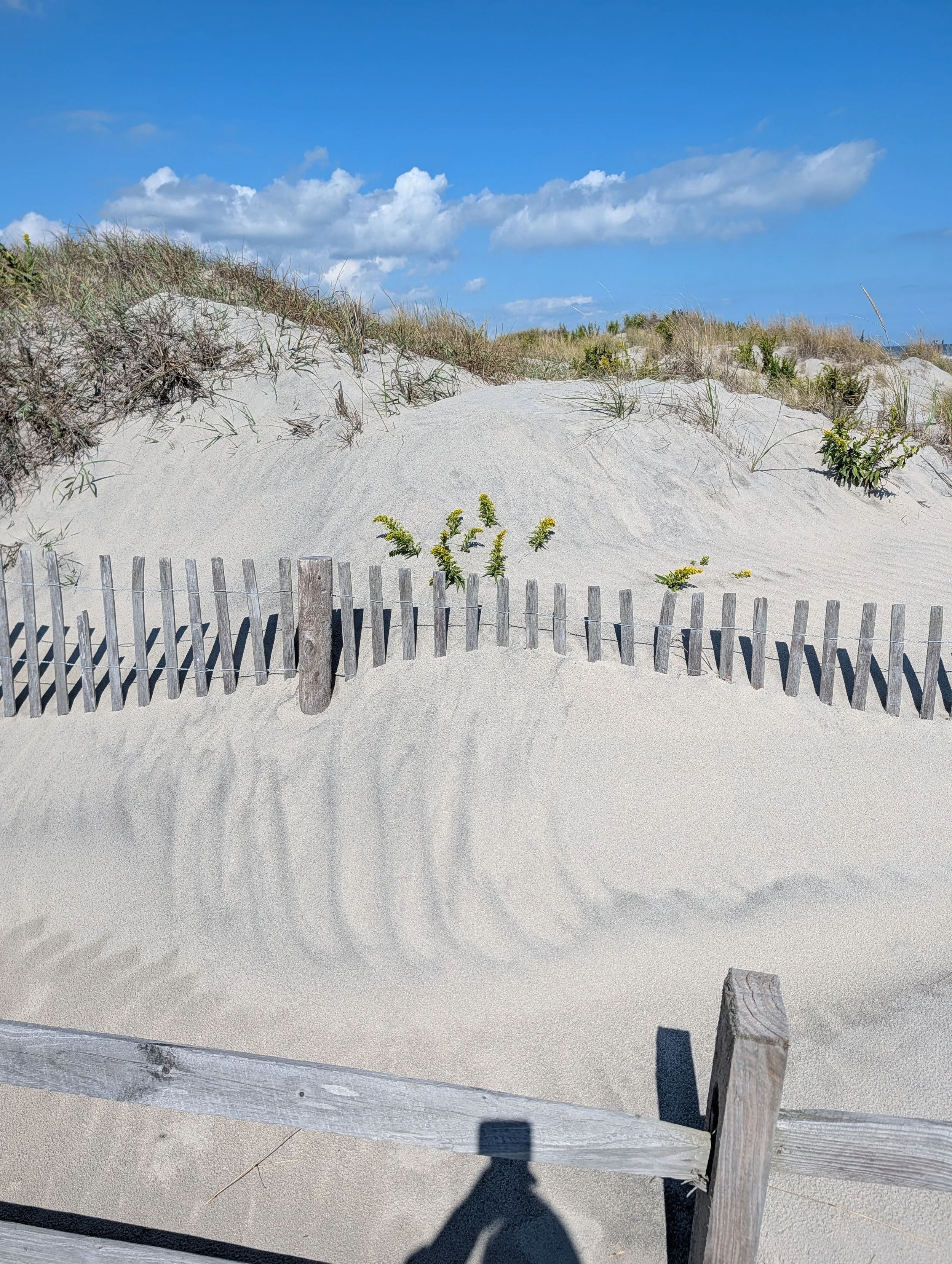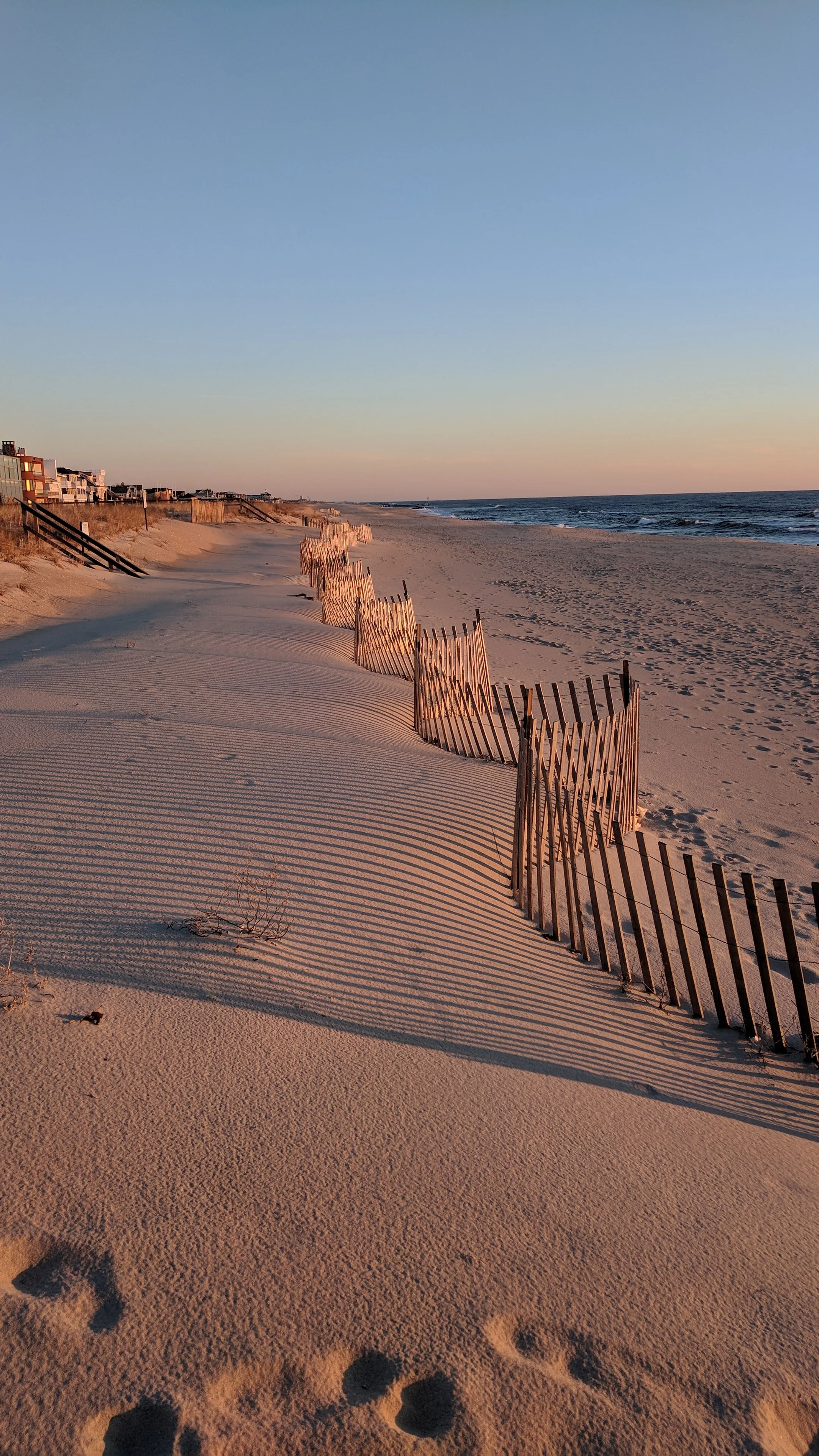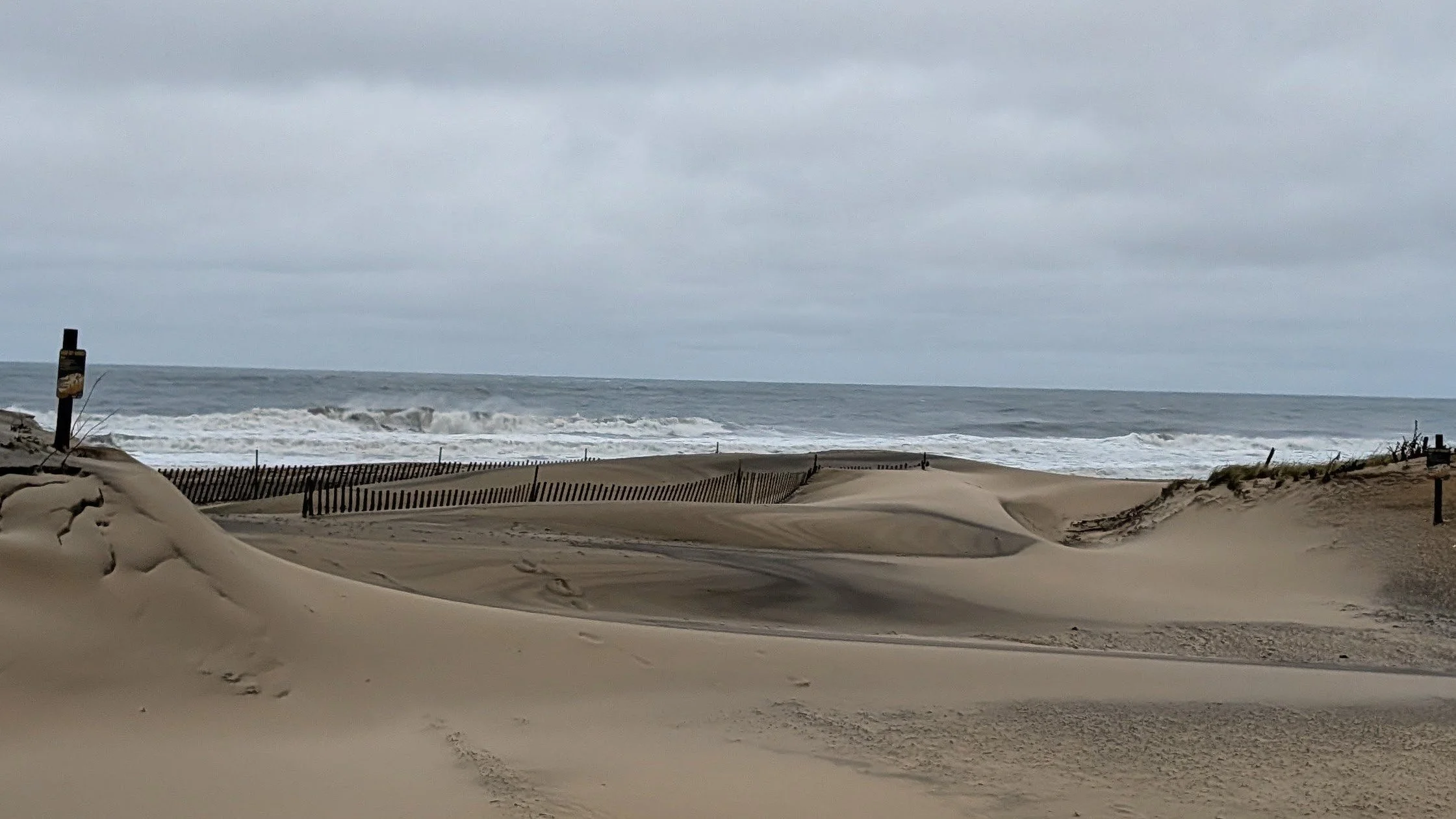Classic dune fencing is part of the images people have of the Shore
The dune fence hasn't really changed much over my lifetime. Slats about 4 inches wide by 4 feet high, strung on twisted wire, that rust away over time. The gap seems unchanged, letting about half the air through. Many artists use them to give us a signal that we are at the Jersey Shore or the New England Coast.
The zig zag catches more sand and allows tractors to move the sand back onto the beach in the Spring.
This latest nor'easter is a good example of the utility of these fences. Where did they come from?
Natural barriers have been used by farmers as windbreaks for centuries. A line of trees or hedges alongside a field can have a dramatic effect on the health of crops. Extreme wind dries them out and makes them more vulnerable to disease. In the same way, people living near the coast used rocks to alter shellfish beds. In New Zealand, Maori planted seasonal grasses and included dunes in their sacred spaces, knowing the value of preserving their protection from storms.
The original dune fence seems to be a French invention. The earliest recorded large-scale deployment occurred in 1860 along France's Opal Coast, near Calais and Dunkirk, under the auspices of the Ponts et Chaussées (engineering corps). Responding to decrees from Napoleon III's administration to protect the ports, teams installed kilometer-long barriers of chestnut pilings. The restored dunes preserved farmlands in addition to the port areas after losing beaches to storm-induced retreat from over-grazing the grasses. Ground-penetrating radar surveys of these sites reveal stratigraphic layers up to 20 feet thick, evidencing rapid fore-dune accretion over many years. The practice migrated north along the coast of the North Sea to Belgium, where the practice was honed in the 1870s.
The USA imported the practice during the Gilded Age, but we were still in the habit of disrespecting dunes. Henry Yard grazed cattle on the Belmar dunes, and William Lucas built a small gauge railroad to cart the sand hills in North Spring Lake to fill in the swampy area between Ocean Road and Wreck Pond in Spring Lake Beach.
There was a major storm in 1938 that came through New Jersey, ran across Eastern Long Island, and then ripped up Cape Cod. All along the way, dunes were blown away. Wildwood had three feet of water on the entire island; Bay Head and Point Pleasant lost their boardwalks. In New England, entire towns vanished, and Dune Road in West Hampton lost almost all of its 200 cottages. Afterward, the Federal Government got serious about protecting the dunes.
Thorvald Solberg, a Soil Conservation Service (SCS) engineer, formalized specifications for sand fencing in the early 1940s. His manuals drew on the French and Dutch, adopting a 40-50% porosity ratio with slat spacing of 1-2 inches (2.5-5 cm), with fences angled towards the Northeast wind. These ratios have not changed all that much in the subsequent 80 years. The typical wood fence is still a cheap and effective ingredient in any dune project, and they continue to be made according to Thorvald’s specs.
Too narrow and the areas on the ends scour the sand. Too wide, and the sand velocity does not slow enough to drop to the ground.
The 2025 October 12-13 Nor’easter. The dune fence proves its worth at the beach openings.
These ratios allow for maximum buildup of sand on the leeward side of the fence. In front of dunes they keep the sand on the beach. Extreme storms will have about 40 percent of their energy absorbed by dunes, protecting the houses immediately inland.
Snow drifting on roadways is another application for the fencing. In fact, the largest manufacturer of dune fence is far from the sea in Strongsville, Ohio. Kalinich Fence Company has been in business since 1905 and claims the largest market share in North America of both wooden snow fencing and dune fencing.
The Sea Girt beaches, once eroded up to the boardwalk, are wider today than they have ever been. Our beach crew respects the federal money spent on replenishment over the years by keeping as much sand on the beach as possible. Good management and good fortune have combined to make our dune-laden beaches some of the nicest along the coast.
The dune fences ready for another winter in action.




